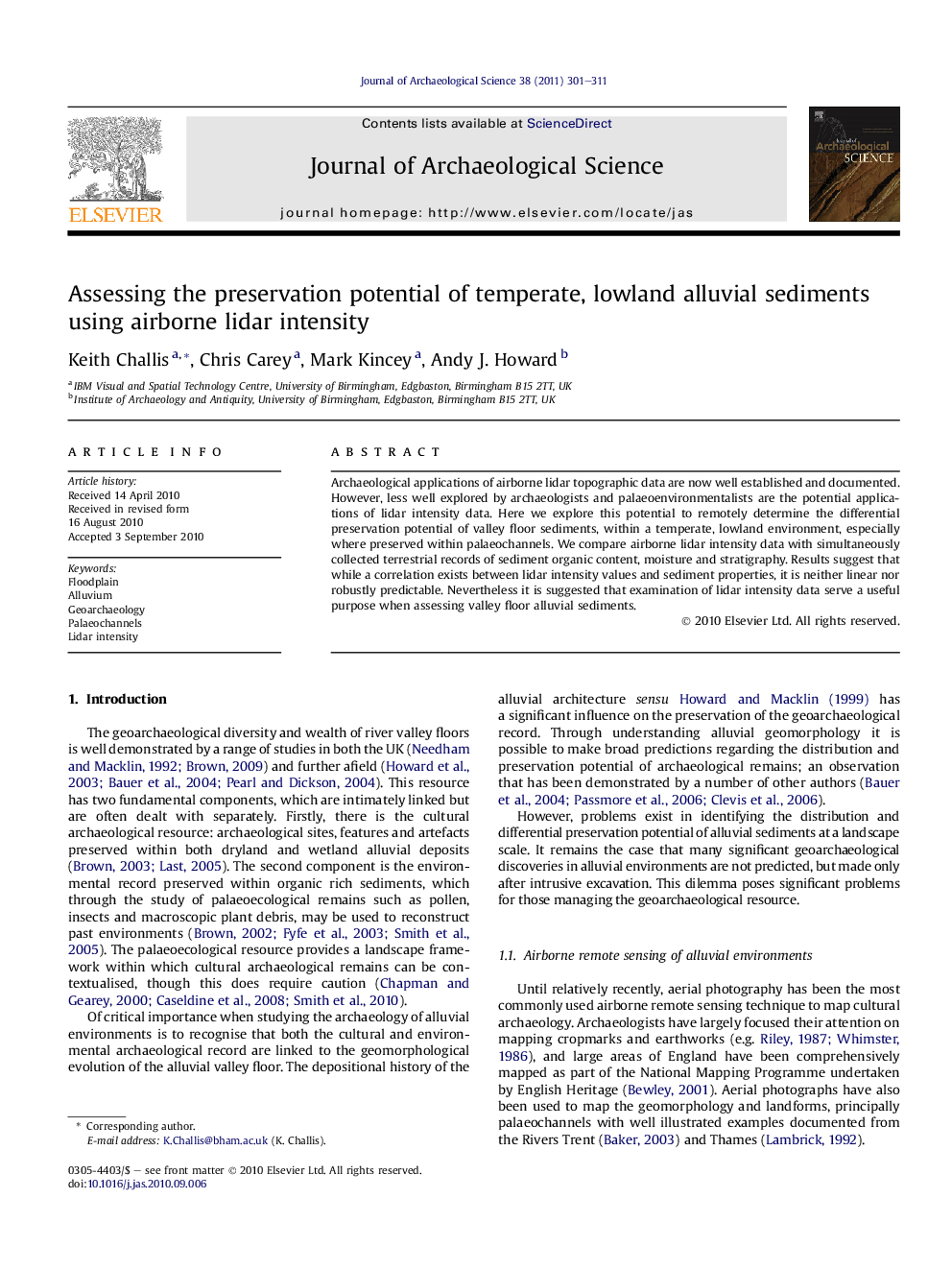| Article ID | Journal | Published Year | Pages | File Type |
|---|---|---|---|---|
| 1036206 | Journal of Archaeological Science | 2011 | 11 Pages |
Archaeological applications of airborne lidar topographic data are now well established and documented. However, less well explored by archaeologists and palaeoenvironmentalists are the potential applications of lidar intensity data. Here we explore this potential to remotely determine the differential preservation potential of valley floor sediments, within a temperate, lowland environment, especially where preserved within palaeochannels. We compare airborne lidar intensity data with simultaneously collected terrestrial records of sediment organic content, moisture and stratigraphy. Results suggest that while a correlation exists between lidar intensity values and sediment properties, it is neither linear nor robustly predictable. Nevertheless it is suggested that examination of lidar intensity data serve a useful purpose when assessing valley floor alluvial sediments.
